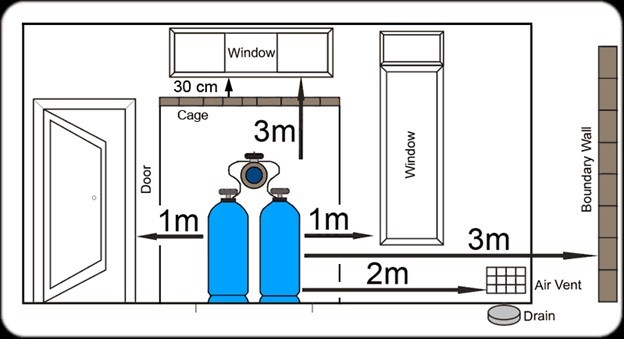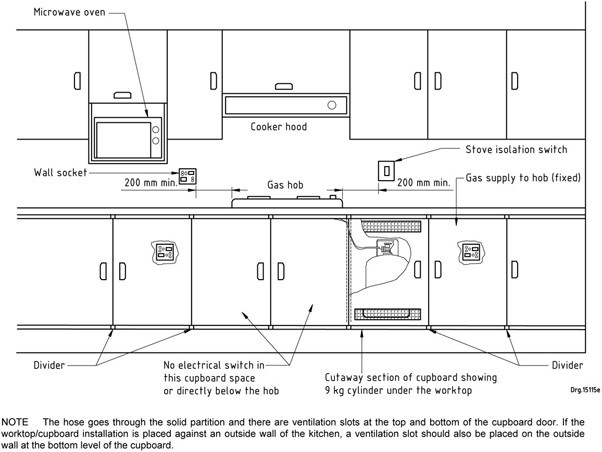ELECTRICAL INSPECTIONS
The Electrical Inspection is by far the most complicated of the three involving not just an entire book of regulations, SANS10142-1: 2020, but also includes the occupational health and safety act.
This certificate covers the electrical “installation” from the point where the mains supply cable enters the premises, generally the top of the Main Switch to the point of consumption, generally described as a plug socket or where the wires connect to a fixed appliance.
The certificate does NOT include appliances fixed or free standing, only the correctness of how these devices are connected to the installation. Fixed appliances include things like, stove, geyser, pool & pond pumps, aircon units, garage and gate motors, pool lights etc.
The electrical regulation is primarily concerned with correctness and safety of your electrical Installation and that everything that forms part of the installation is in good working order.
We inspect the following Electrical items:
- The mains boards, correct connections, correct cable sizes, correct circuit breakers and labelling, Earth leakage operation. That all items and covers are properly secured etc.
- Check that all plugs and switches work correctly with no worn contacts, are wired correctly, secure, and if metal are correctly bonded/Earthed.
- All fixed appliances, including lights that have exposed metal need to be earthed correctly.
- Ensure that all fixed appliances have been connected to the installation by approved means, which varies depending on the type of appliance and the current it draws.
- We do an insulation test, PSC, Loop & Voltage tests.
- Check all wiring to ensure its correctly rated, colour coded correctly and the correct type for its application.
- Each room must have at least one working light, and the correct type for the room it is in, enclosed light fittings in bathrooms.
- We check to make sure that no electrical points, switches or lights are in illegal positions, not close to shower, baths, etc.
- We need to ensure that all devices in the installation are correctly rated, installed and of approved types.
- Even temporary installations, which have been installed in a manner that would imply they are permanent, need to comply with regulations. You cannot extend the lead on a fixed appliance to the nearest plug point you must extend the plug circuit to the appliance.
LP GAS INSPECTIONS
We perform inspections of LP gas pipeline installations in order to certify their compliance with the SABS Regulations for LP gas installations (SANS 10087 - 1:2008).A Certificate of Conformity will be issued for those installations that fully comply.
An inspection comprises of the following aspects:
- Cylinder storage to comply with safety zones
- SABS approved piping used installed in the correct manner.
- The installation of isolation and emergency valves.
- Adequate ventilation at cylinder and inside rooms.
- If SABS approved appliances are connected to the reticulation system.
- A pressure leak test to establish the system continuity.
- Correct equipment is installed and that it is registered with the LP Gas Association.
Gas installations for which a COC are required would include the following equipment:
- Built in gas fires or braai's.
- Gas stoves (4 Plate, 5 Plate & 6 Plate)
- Hot water systems & Gas Geysers.
- Pizza ovens.
- LP Gas Generators.
- Gas Hobs
- Fire places (Gas fed)
- Boiling tables
External Installation: Gas cylinders, stored outside and piped to the appliance(s)
The drawing below indicates the minimum requirements with regard to storage of cylinders. Special care must be taken when deciding on the location for the cylinder storage. The drawing below indicates the minimum requirements with regard to storage of cylinders.

- Any Electric Motor or Switch Box must be a minimum of 5m away from the cylinder storage area.
- Specialized piping must be used when building the gas pipeline. Normal plumbing piping may not be used.
- Warning signs & Shut off Valves signs must be installed.
- Where pipes are concealed (running through walls or under floor) special care must be taken to ensure compliance to set regulations. No joints are allowed in any concealed location.
- The use of specialized flexible hose is limited to 2m.
- Gas cylinders may NOT be stored in a garage.
- Ventilation to the area where the cylinders are stored is key.
- All materials and appliances used and installed must be SABS and SANS approved.
- Cylinders must be stored on a levelled surface.
- Special care must be taken to secure the cylinders. This can be done by means on a chain system or the use of a gas cage.
- Thatch Roof House: A separate set of rules applies to the storage of Gas Cylinders on site which is applicable to Thatch roof homes. Similar to the above, except that the gas cylinders must be stored behind a purpose built fire wall. The cylinder storage must not be closer than 3m from the roof edge.
Internal Installation: Single cylinder, inside the kitchen to the appliance(s):
The type of installation is more cost effective and cheaper. Small installation with minimum pipe run. Some regulatory requirements must however be considered:
- Rubber pipe (Orange hose) may not pass through any partition, a Brass Cupboard bush must be used.
- Spacing of plug points may not be above the Gas hob.
- Allowance for airflow through the cupboard.
- Service and shut off valves must be allowed for.
- Airflow or ventilation for any indoor installation is critical.
- Warning signs & Shut off Valves signs must be installed.
- Below is a basic drawing of the requirements linked to an indoor installation.

ELECTRIC FENCE INSPECTIONS
We perform inspections on the Electrical Fence installations to certify the installation is compliant as per SANS Regulations (SANS 10222-3:2011). A Certificate of Conformity will be issued for those installations that fully comply.
An inspection comprises of the following aspects:
- Wall Height: Minimum wall height of private property to be secured - 1.5 metres.
- Bracket: Upright brackets may be used without any height restriction.
- Angled brackets: Brackets can be angled at no more than 45 degrees out and are to be installed on the inside of the boundary wall.
- Brackets are 3m apart.
- Earth spikes are installed every 30 metres.
- Lightning Protection is installed with 3 x Additional Earth Spikes.
- All HT Cable is Installed in conduit with Junction Boxes.
- Correct installation height of the Energizer.
- Warning Signs: Electric fencing installed along a public road or pathway shall be securely identified with YELLOW WARNING SIGNS (100 x 200 cm) at intervals not exceeding 10 meters. All gates and access points to have warning signs.
- Electrified Gates: To be capable of being opened/ closed without the person receiving a shock.
- Neighbours: It is not permissible to angle brackets into a neighbour's property without their knowledge and/or consent.
- Hazard: Electrified fences are to be installed and operated so that they cause electrical hazard or entanglement to persons or animals.
- Barbed wire or razor wire: These shall never be electrified by any energizer.
These are just some of the more basic regulations concerning domestic installations.

